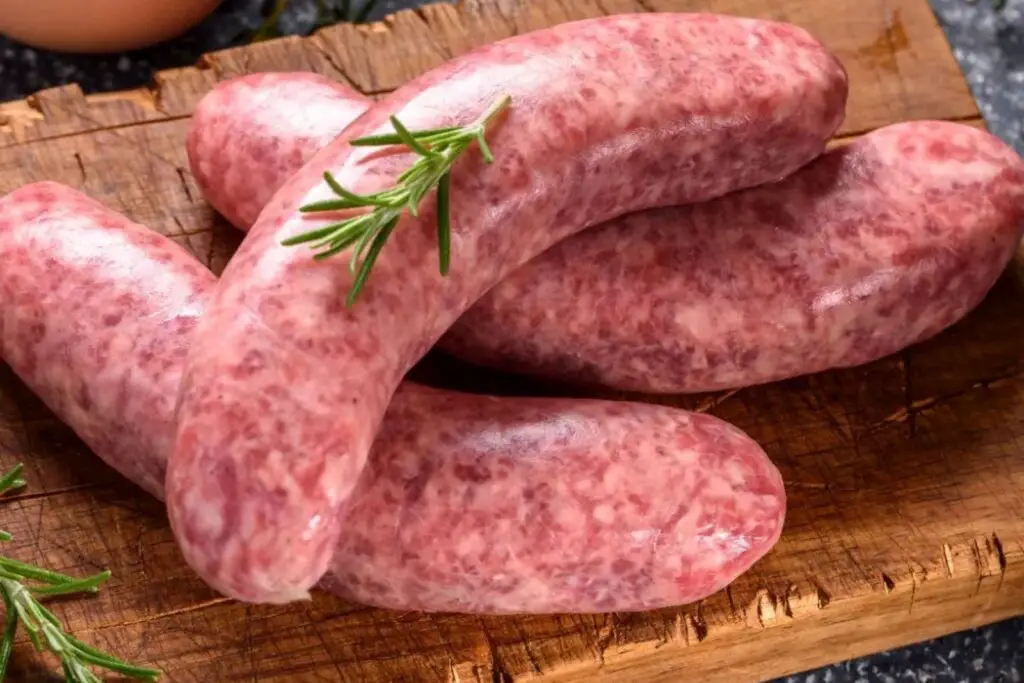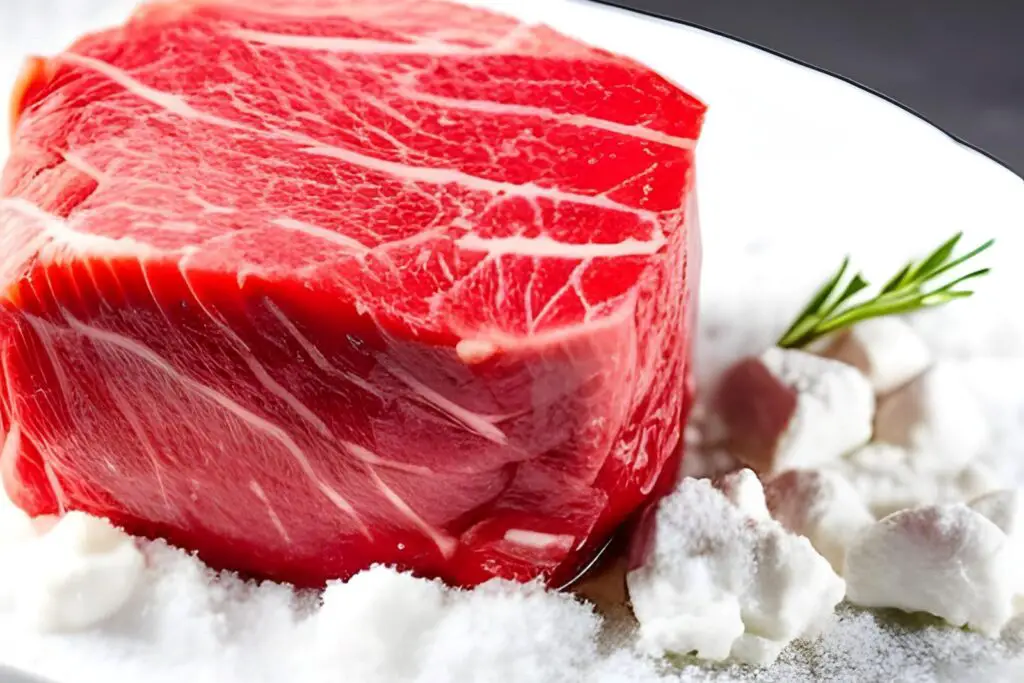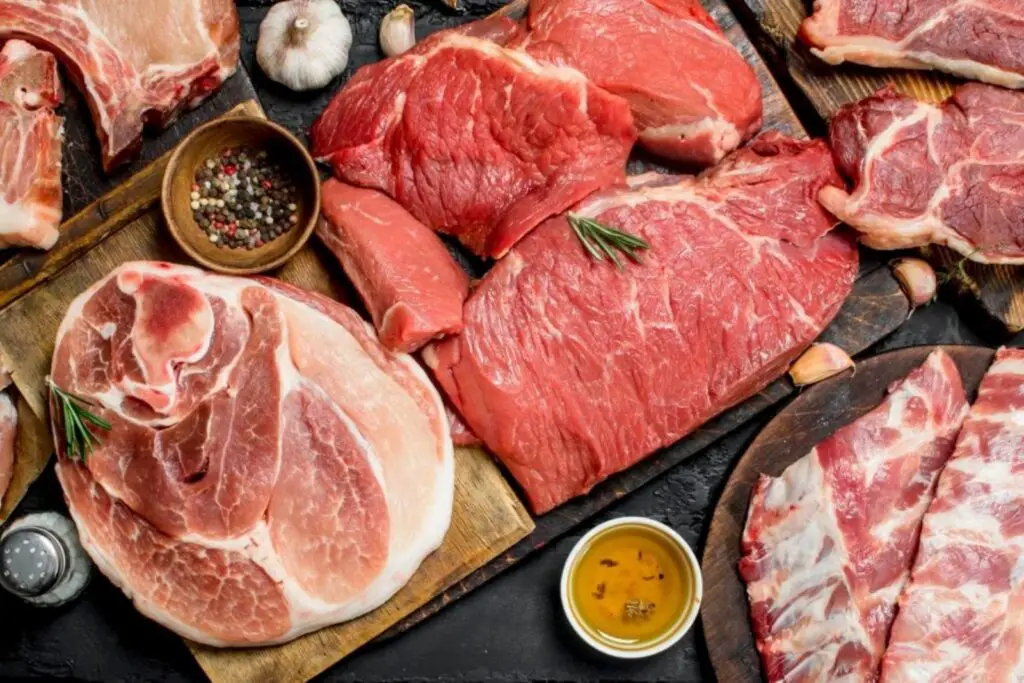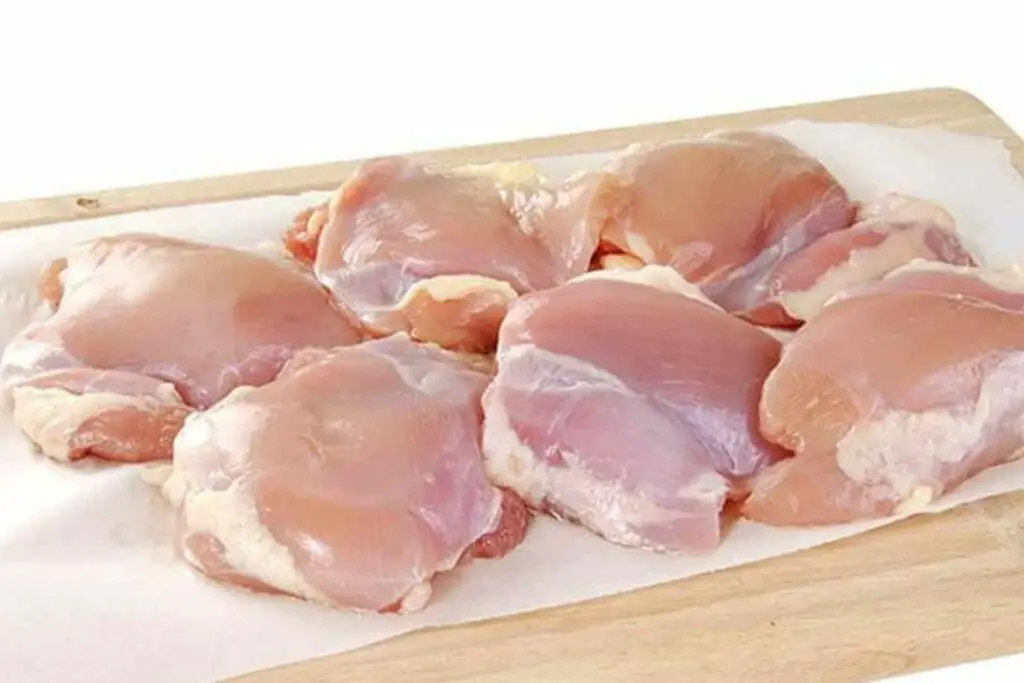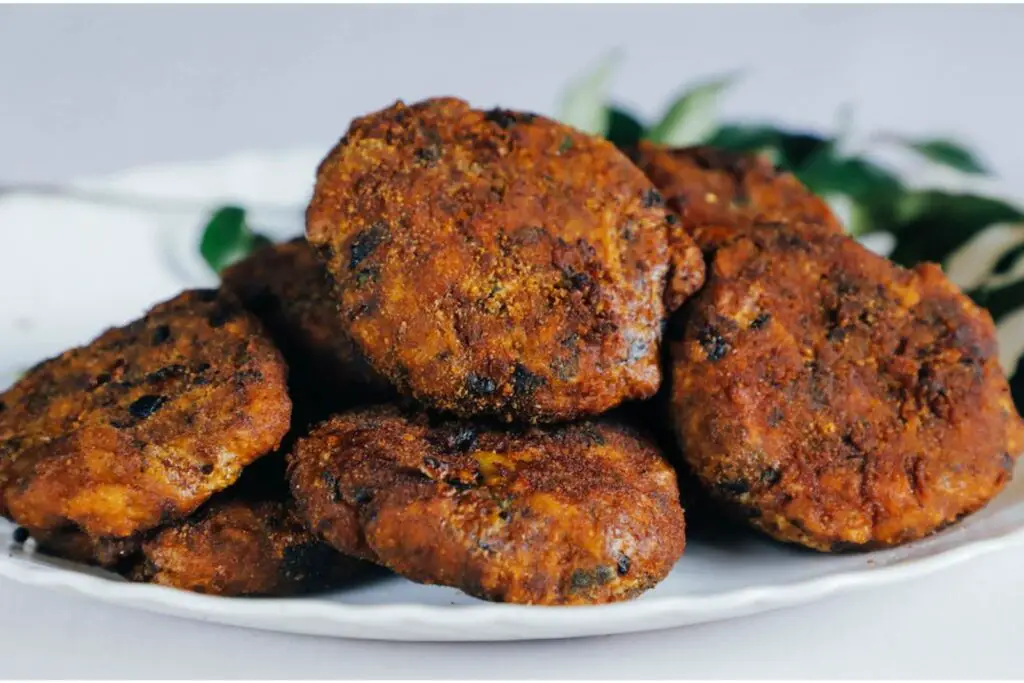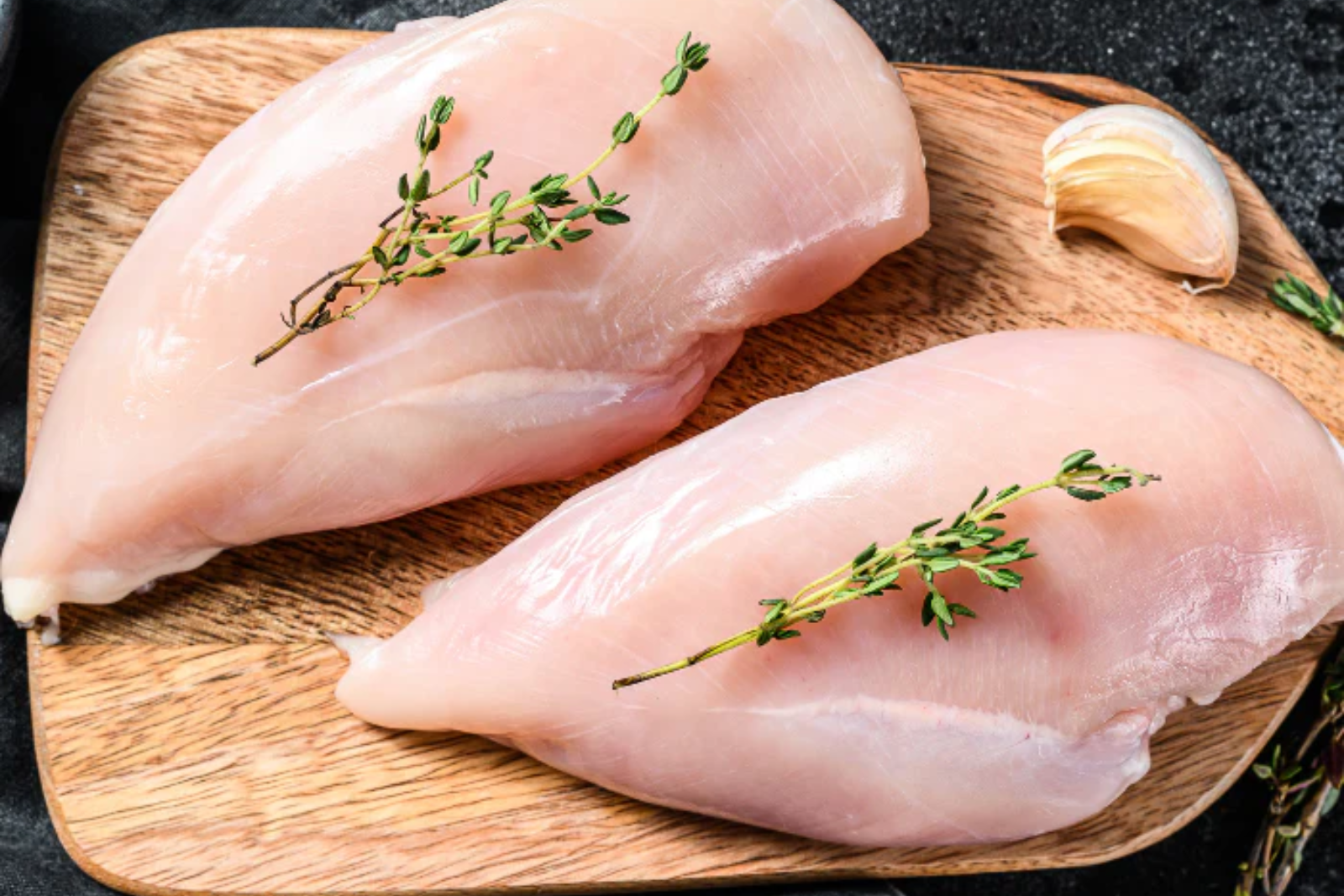
Chicken cutlets are versatile and delicious pieces of poultry that can be used in a variety of dishes. Whether you’re preparing a quick weeknight meal or planning ahead for future recipes, freezing chicken cutlets can help you save time and ensure that you always have this flavorful ingredient on hand. With a few simple steps, you can freeze chicken cutlets effectively while preserving their taste and texture. This article provides a comprehensive guide on how to freeze chicken cutlets to maintain their optimal quality for future use.
Here’s a step-by-step guide on freezing chicken cutlets:
Step 1: Select fresh chicken cutlets
When selecting fresh chicken cutlets for freezing, it’s important to choose high-quality cuts from a reputable source. Look for cutlets that are plump and have a firm texture. Avoid cutlets that show signs of discoloration, such as a yellow or grayish tint, as this may indicate spoilage. Additionally, pay attention to any unpleasant odors emanating from the cutlets, as this could be a sign of spoilage or improper handling.
Freshness is crucial because freezing can only preserve the quality of the chicken cutlets at the time they are frozen. Freezing does not improve the quality of the meat, so starting with fresh cutlets ensures that you’ll have flavorful and tender chicken once they are thawed and cooked.
To ensure the freshness of the chicken cutlets, consider purchasing them from reputable butchers, farmers markets, or grocery stores known for their high-quality meat. If possible, ask the seller about the origin and handling of the cutlets to ensure they have been stored and transported properly.
Remember that proper storage and handling of the chicken cutlets after purchase are also essential to maintain their freshness. If you’re not planning to freeze the cutlets immediately, store them in the refrigerator at temperatures below 40°F (4°C). Place them in a covered container or wrap them securely to prevent cross-contamination with other foods and to minimize exposure to air.
Step 2: Prepare the cutlets
Preparing the chicken cutlets before freezing is an essential step to ensure their quality and safety. Here’s an explanation of the tasks involved in preparing the cutlets:
- Washing: Washing the chicken cutlets under cold water helps remove any dirt, debris, or surface bacteria that may be present. However, it’s important to note that washing alone cannot completely eliminate harmful bacteria, such as salmonella or Campylobacter, which can be present in raw poultry. The primary means of eliminating bacteria is through proper cooking. Nevertheless, washing the cutlets can help reduce the risk of cross-contamination and remove any visible impurities.
- Drying: After washing the cutlets, pat them dry with paper towels. Moisture on the surface of the cutlets can promote the growth of bacteria during freezing and potentially affect the texture and quality of the meat. Drying the cutlets thoroughly helps minimize excess moisture and aids in the preservation of their texture.
- Trimming: While not mandatory, trimming off any excess fat or connective tissue from the chicken cutlets can improve their overall quality. Excess fat can become rancid over time during freezing and affect the taste of the meat. Additionally, removing connective tissue can help ensure a more tender and enjoyable eating experience.
It’s important to handle the cutlets with clean hands and use clean utensils during the preparation process to avoid cross-contamination. After completing these steps, the chicken cutlets are now ready to be packaged and frozen.
Should I season the chicken cutlets before freezing?
It is generally recommended to season chicken cutlets before cooking rather than before freezing. Seasoning the chicken cutlets before freezing may cause the flavors to diminish or become unevenly distributed during the freezing and thawing process. It’s best to freeze the chicken cutlets in their natural state and season them just before cooking to ensure the best flavor and seasoning absorption.
Step 3: Package the cutlets
Packaging the chicken cutlets properly before freezing is crucial for maintaining their quality and convenience. Here’s an explanation of why dividing the cutlets into portions and wrapping them separately is beneficial:
- Portion control: Dividing the chicken cutlets into portions allows you to freeze them in quantities that align with your future needs. This way, you can thaw and use only the desired amount of chicken without having to defrost the entire package. It provides flexibility and prevents unnecessary waste.
- Convenience: By separating the cutlets into individual servings or grouping them according to your preferred portion size, you make it more convenient to handle and use them later on. Whether you’re preparing a meal for yourself or your family, having pre-portioned cutlets makes meal planning and preparation easier and more efficient.
- Thawing flexibility: Wrapping each portion separately enables you to thaw only the amount of chicken cutlets you require at any given time. This eliminates the need to thaw the entire package and allows you to maintain the quality of the remaining frozen cutlets. Thawing individual portions also reduces the risk of bacterial growth that can occur from repeated thawing and refreezing.
- Prevention of freezer burn: When you wrap each portion of chicken cutlets separately, you provide an extra layer of protection against freezer burn. Freezer burn occurs when air comes into contact with the surface of the meat, causing dehydration and the formation of unappealing ice crystals. By tightly wrapping each portion, you minimize air exposure and help maintain the quality and texture of the cutlets during freezing.
To package the cutlets, you can use plastic wrap, freezer-safe resealable bags, or a combination of both. Ensure that each portion is wrapped securely, removing as much air as possible to prevent freezer burn. Labeling the packages with the contents and freezing date is also recommended for easy identification and rotation.
Step 4: Wrap the cutlets
Properly wrapping the chicken cutlets before freezing is essential to maintain their quality and prevent freezer burn. Here’s an explanation of why using plastic wrap or freezer bags and minimizing air exposure are important steps:
- Freezer burn prevention: Freezer burn occurs when the surface of the meat comes into contact with air, causing moisture loss and the formation of unappetizing ice crystals. By wrapping each portion of chicken cutlets tightly, you create a barrier that minimizes air contact, reducing the risk of freezer burn. This helps preserve the texture, flavor, and overall quality of the cutlets during freezing.
- Protection from odors and cross-contamination: Wrapping the cutlets individually in plastic wrap or using freezer bags provides an additional layer of protection against odors and cross-contamination. It helps prevent the transfer of flavors and smells from other foods in the freezer, ensuring that the chicken cutlets retain their distinct taste and aroma.
- Minimizing air exposure: Minimizing air exposure is crucial because air can cause the quality of frozen food to deteriorate over time. Oxygen in the air can lead to oxidative reactions that affect the taste and color of the chicken cutlets. By wrapping the cutlets tightly, you reduce the amount of air in contact with the meat, helping to maintain its freshness.
- Flexibility and organization: Using plastic wrap or freezer bags allows for better organization and ease of use. You can stack and store the individually wrapped portions more efficiently in the freezer, optimizing space and making it easier to access the desired quantity of cutlets when needed.
What is the best way to package chicken cutlets for freezing?
The best way to package chicken cutlets for freezing is to use airtight and freezer-safe packaging. Individually wrap each chicken cutlet in plastic wrap or place them in separate freezer bags to prevent freezer burn and moisture loss. It’s also a good idea to remove as much air as possible from the packaging to minimize the risk of freezer burn. Finally, label the packaging with the date of freezing for easy reference.
Step 5: Label and date the packages
Labeling and dating the packages of frozen chicken cutlets is an important step in freezer organization and food safety. Here’s an explanation of why labeling and dating are beneficial:
- Easy identification: Labeling each package with the contents (chicken cutlets) allows you to quickly identify the packages in your freezer. This prevents confusion and saves time when you’re searching for a specific item among other frozen foods. Clear labeling ensures that you can easily distinguish the chicken cutlets from other items and select the desired package without guesswork.
- Proper rotation: Dating the packages with the freezing date is essential for maintaining food safety and optimal quality. By having the date clearly marked, you can easily determine the order in which the packages should be used. This promotes proper rotation, ensuring that the oldest packages are used first, while the newer ones remain frozen for longer periods. Proper rotation helps prevent food waste and ensures that you consume the chicken cutlets before any potential loss in quality.
- Freshness and taste: Properly labeling and dating the packages allow you to keep track of how long the chicken cutlets have been frozen. While frozen chicken cutlets can generally be stored for several months, it’s recommended to consume them within a specific timeframe for the best taste and quality. By having the freezing date clearly marked, you can ensure that you use the cutlets within the recommended storage duration, resulting in better flavor and texture when cooked.
- Food safety: Labeling and dating the packages also contribute to food safety. It allows you to monitor the duration of storage and adhere to recommended guidelines for safe consumption. This is particularly important for perishable items like chicken cutlets, as consuming them beyond their recommended storage period can increase the risk of foodborne illnesses.
Step 6: Store in the freezer
Storing the wrapped chicken cutlets in the freezer properly is crucial for maintaining their quality and preventing them from sticking together. Here’s an explanation of the steps involved in storing the cutlets:
- Flash freezing: Flash freezing refers to the initial process of freezing the chicken cutlets individually and quickly to prevent them from sticking together. To do this, arrange the wrapped cutlets in a single layer on a baking sheet or a flat surface that fits in your freezer. The individual wrapping helps maintain the integrity of each portion, while the single layer allows for efficient and even freezing.
- Prevention of sticking: Flash freezing the chicken cutlets individually is essential to prevent them from freezing together in a solid mass. If the cutlets are stored without flash freezing, they may stick together, making it difficult to separate them when you want to use a specific portion. By ensuring they freeze individually first, you can easily take out the desired amount of chicken cutlets without having to thaw the whole batch.
- Transfer to a designated area: Once the chicken cutlets have been partially frozen during the flash freezing process, transfer them to a designated area in your freezer for long-term storage. This area should be free from any potential contaminants and provide a consistent temperature below 0°F (-18°C) to keep the cutlets frozen solid.
It’s important to note that the duration of flash freezing can vary depending on the thickness of the cutlets and the efficiency of your freezer. Generally, it takes a couple of hours for the cutlets to become partially frozen, but it’s recommended to check them periodically and transfer them to the designated area in the freezer once they are firm to the touch.
Step 7: Freezing duration
The duration for which chicken cutlets can be stored in the freezer while maintaining their quality depends on several factors. Here’s an explanation of freezing duration and its impact on the cutlets:
- Recommended storage period: Chicken cutlets can generally be stored in the freezer for up to three months without a significant loss in quality. During this time, the cutlets remain safe to eat. However, it’s important to note that the longer the cutlets are stored in the freezer, the greater the potential for changes in taste, texture, and overall quality.
- Best taste and texture: To enjoy the chicken cutlets at their best, it is recommended to consume them within one to two months of freezing. During this period, the cutlets retain their optimal taste, tenderness, and juiciness. As time goes by, frozen food can develop freezer burn, which affects the flavor and texture. While the cutlets may still be safe to eat after two months, their quality may start to decline.
- Proper storage conditions: The recommended storage duration assumes that the chicken cutlets are stored in a freezer at a constant temperature of 0°F (-18°C) or below. Fluctuations in temperature can affect the quality of frozen food, including the chicken cutlets. It’s important to maintain a consistent freezing environment to minimize any potential degradation.
- Freezer burn prevention: Freezer burn occurs when the surface of the meat is exposed to air, leading to moisture loss and the formation of ice crystals. Proper wrapping and packaging, as discussed earlier, help minimize the risk of freezer burn and prolong the quality of the chicken cutlets during freezing. However, even with proper packaging, the longer the cutlets are stored, the higher the chances of developing freezer burn.
It’s worth mentioning that while frozen chicken cutlets may still be safe to eat beyond the recommended storage period, the taste, texture, and overall quality may not be as desirable. It’s always a good practice to label the packages with the freezing date and prioritize consuming the oldest packages first to ensure freshness.
Step 8: Thaw and cook
Thawing and cooking the frozen chicken cutlets properly is essential to ensure food safety and achieve the desired taste and texture. Here’s an explanation of the thawing and cooking process:
- Thawing in the refrigerator: The recommended method for thawing frozen chicken cutlets is to do so in the refrigerator. This slow thawing process allows for gradual and even thawing, minimizing the risk of bacterial growth and maintaining the quality of the cutlets. Place the wrapped cutlets on a plate or tray in the refrigerator and let them thaw overnight or for approximately 24 hours, depending on the thickness of the cutlets.
- Microwave defrosting: If you’re short on time and need to thaw the chicken cutlets more quickly, you can use the defrost function on your microwave. Follow the manufacturer’s instructions for defrosting meat, as the process can vary depending on the microwave model. Be cautious and avoid overcooking the edges of the cutlets, as this can lead to uneven cooking and loss of moisture.
- Cooking the thawed cutlets: Once the chicken cutlets are thawed, you can proceed to cook them according to your preferred recipe. The cooking method may vary depending on the dish you’re preparing, whether it’s pan-searing, baking, grilling, or incorporating them into a stew or stir-fry. Ensure that the internal temperature of the cooked chicken reaches at least 165°F (74°C) to ensure food safety.
It’s important to note that thawed chicken cutlets should not be refrozen unless they have been cooked. Refreezing previously frozen and thawed raw chicken can impact its quality and safety.
Other related questions
Can I refreeze previously thawed chicken cutlets?
It is generally safe to refreeze previously thawed chicken cutlets, but it’s important to handle them properly to maintain food safety. When thawing chicken cutlets, it is best to thaw them in the refrigerator or using the cold water method, rather than leaving them at room temperature. If you have thawed the chicken cutlets in the refrigerator, you can refreeze them without cooking as long as they haven’t been sitting at room temperature for more than two hours. However, it’s important to note that each time you freeze and thaw the chicken, its quality may be slightly affected.
How do I know if my frozen chicken cutlets have gone bad?
To determine if frozen chicken cutlets have gone bad, you can look for several signs. Firstly, check for any changes in appearance, such as discoloration or ice crystals forming on the surface. Secondly, if the cutlets emit a strong, off-putting odor, it is likely an indication of spoilage. Lastly, if the texture of the chicken feels slimy or sticky when thawed, it is a sign of potential bacterial growth and should not be consumed. When in doubt, it’s always best to err on the side of caution and discard any chicken cutlets that show signs of spoilage.
Can I use frozen chicken cutlets with the fresh ones?
Yes, you can use frozen chicken cutlets alongside fresh ones in certain recipes. However, it’s important to consider the differences in texture and moisture content between the two. Frozen chicken cutlets may release more moisture during cooking, which can affect the overall outcome of the dish. It’s recommended to thaw frozen chicken cutlets before using them in recipes that require even cooking or precise measurements. Mixing frozen and fresh chicken cutlets directly in a recipe may result in uneven cooking and potentially affect the overall taste and texture.
Can I freeze breaded chicken cutlets?
Yes, you can freeze breaded chicken cutlets. However, it’s important to take some precautions to maintain their quality. Place the breaded chicken cutlets in a single layer on a baking sheet and freeze them until solid before transferring them to airtight freezer-safe containers or bags. Freezing breaded chicken cutlets may affect their crispness, so it’s recommended to reheat them in an oven or air fryer rather than the microwave for best results.
Can I marinate chicken cutlets before freezing them?
While it is technically possible to marinate chicken cutlets before freezing them, it is generally not recommended. Freezing and thawing can alter the texture and consistency of the chicken, potentially resulting in a less desirable outcome for marinated chicken cutlets. It is best to freeze the chicken cutlets in their natural state and marinate them after thawing for optimal flavor and texture.

